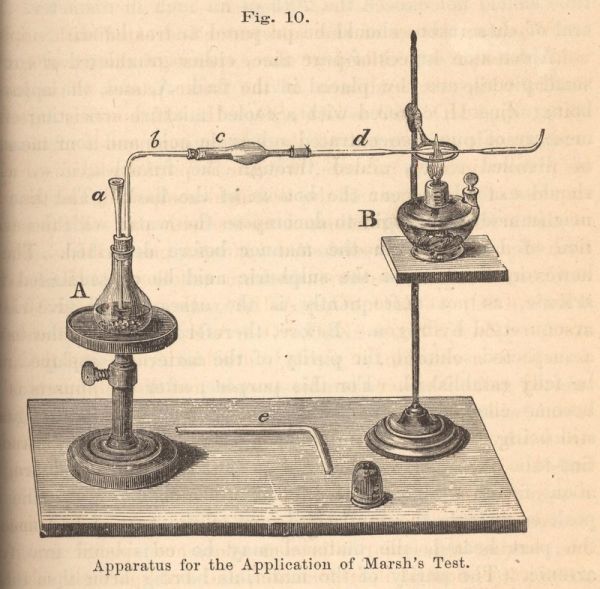
Arsenic has been the go-to poison for people wanting to get rid of family members for centuries. It's odorless, tasteless, produces symptoms of illness that can be attributed to natural causes, and for most of history, hard to detect after the fact. When divorce was difficult, arsenic was easy. Tests were eventually developed to detect arsenic in a human body, but they weren't reliable enough to persuade juries in cases without additional evidence. That is, until British chemist James Marsh developed the Marsh test in 1836, which made its dramatic courtroom debut a few years later.
Perhaps the most famous use of Marsh’s test was in the trial of Marie Lafarge in 1840, in which the defendant stood accused of poisoning her husband. Young Marie had entered an arranged marriage with Charles Lafarge believing him to be a wealthy, cultured businessman, and when she found out he was in fact a boorish clod with a run-down chateau, rough sexual habits and substantial debt, she got to putting arsenic in his food. (Friends mentioned that they’d heard her asking casually about mourning fashions: How long did you have to wear black, again?) By the time Charles came to realize his wife’s devotion to home cooking was not a loving gesture, it was too late.
A back-and-forth festival of forensic testing ensued: local scientists first analyzed the dead man’s beverages, stomach tissue and vomit; and while they claimed to have found arsenic, their glassware broke during testing. Moreover, defense counsel was upset at use of outdated techniques, and called in Mateu Orfila, dean of the Paris Faculty of Medicine and the era’s premier toxicologist, who confirmed that only the Marsh test would be credible in court.
At the time, people were skeptical of forensic scientists, particularly when a defendant's life was at stake. Testimony about test results wasn't enough; they wanted to see the test performed. So what was left of the victim's body was brought into the court for the Marsh test, resulting in trial spectators buying 500 bottles of smelling salts. Read what happened at that trial, and how the results influenced forensic science, at Atlas Obscura.





